Gardening, in its simplest form, is a delightful dance with nature—a chance to nurture living things and watch them flourish under your care. Whether you’re just beginning your gardening journey or are a seasoned green thumb, this weekend offers the perfect opportunity to roll up your sleeves and indulge in the joyous process of creation and transformation. It’s not just about plants; it’s about finding peace, fostering creativity, and connecting with the living world around us.
In this article, we’re excited to present you with ten easy gardening projects that cater to every skill level, ensuring that both novices and experts can find something to spark their interest. You’ll discover projects that promise to enhance your garden’s aesthetic, boost your plant-growing confidence, and maybe even introduce a new favorite hobby. From crafting charming container gardens to starting a simple herb patch, each project is designed to be both satisfying and achievable over a single weekend. Embrace the chance to learn, grow, and maybe even get your hands a bit dirty as you dive into these rewarding gardening endeavors.
Create a Mini Herb Garden
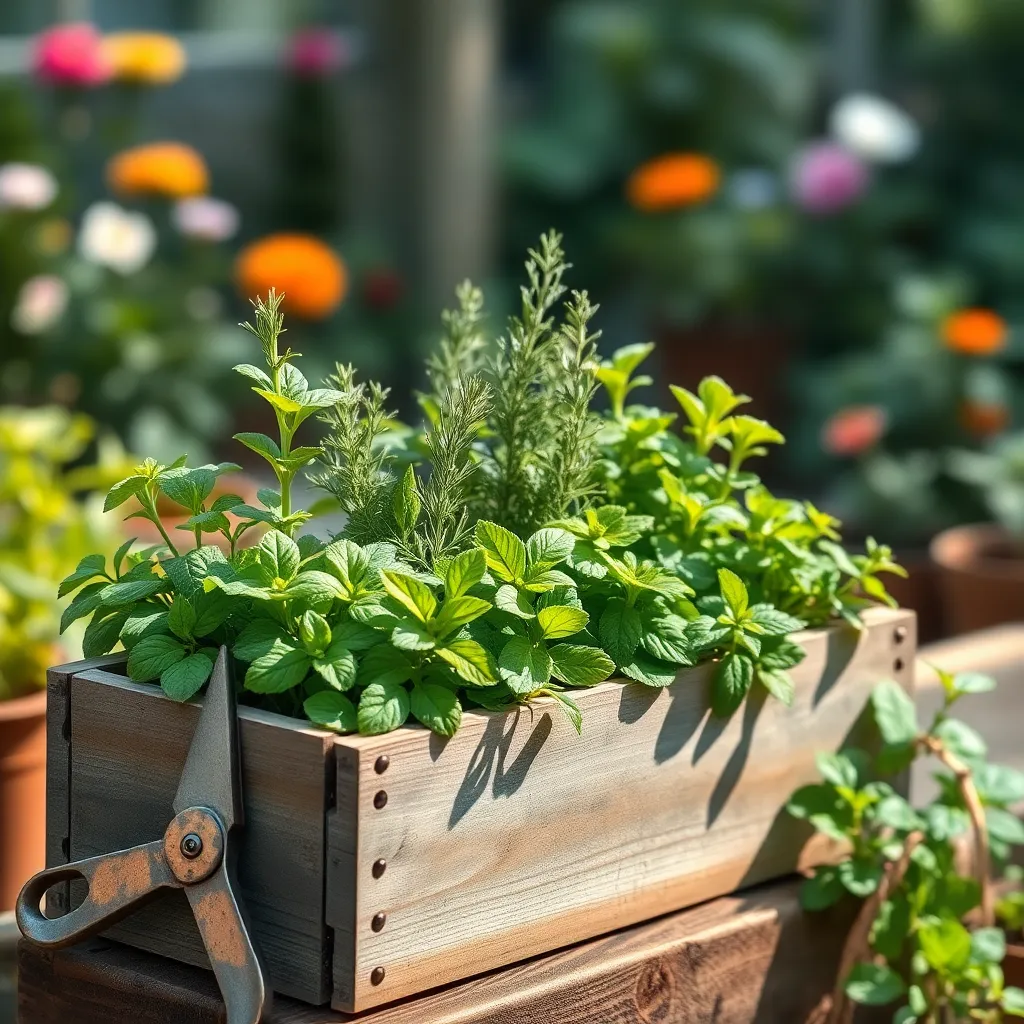
Creating a mini herb garden is a delightful weekend project that can instantly enhance your culinary experiences. Start by selecting a few easy-to-grow herbs like basil, rosemary, and mint, ensuring a variety of flavors for your dishes.
Choose a spot with plenty of sunlight, as most herbs thrive with at least six hours of direct light. If outdoor space is limited, consider using a sunny windowsill inside your home.
For optimal growth, use a well-draining potting soil mixed with a bit of sand or perlite to prevent waterlogging. Keep your herbs in containers with drainage holes to ensure excess water can escape, preventing root rot.
Watering is crucial; herbs prefer slightly moist but not soggy conditions. A good rule of thumb is to water when the top inch of soil feels dry, adjusting frequency based on your specific climate.
Finally, regular harvesting encourages vigorous growth and keeps your plants healthy. Simply pinch off the leaves as needed, and remember that trimming the tops of your herbs can promote bushier growth.
Build a Simple Compost Bin
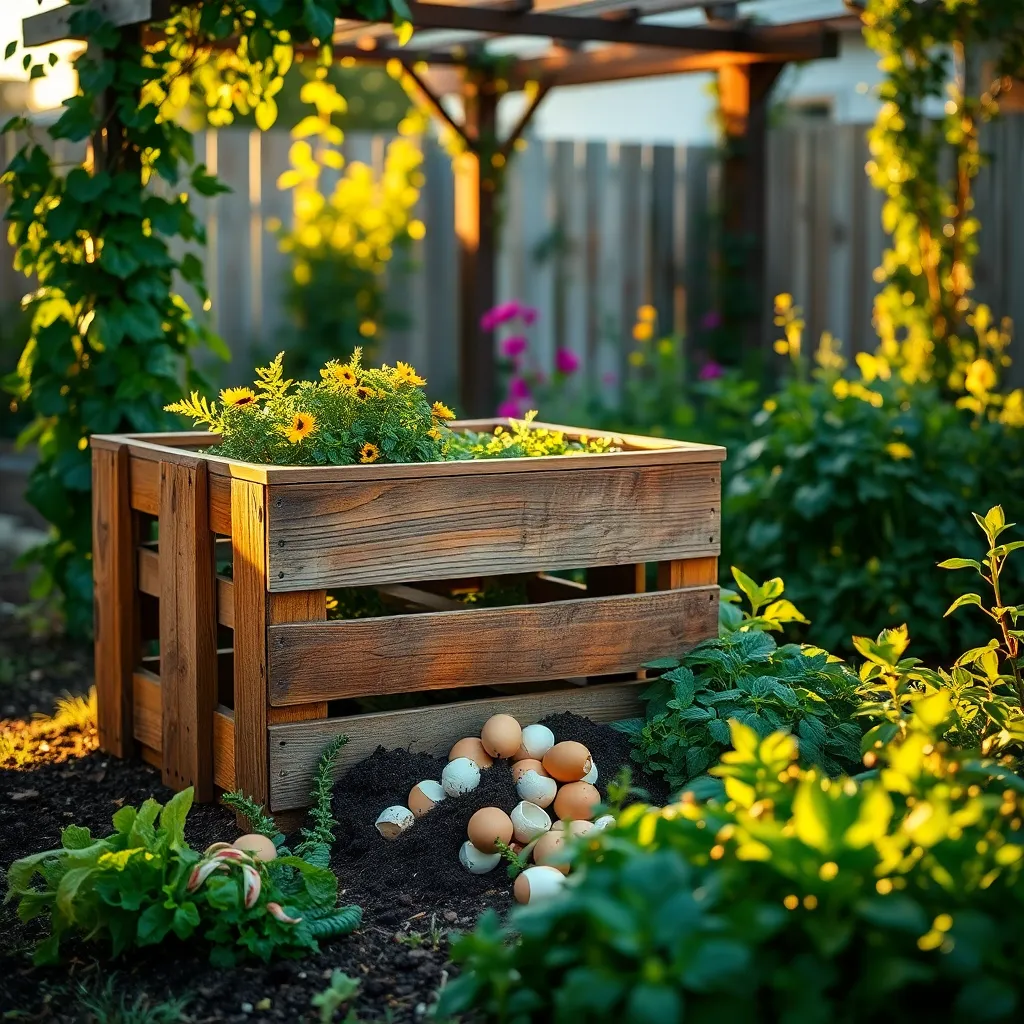
Building a simple compost bin is a straightforward project that can greatly improve your garden’s health. To start, choose a location that is easily accessible and receives partial sunlight, which helps to accelerate the composting process.
A basic compost bin can be made using wooden pallets, wire mesh, or plastic bins. Ensure your bin has adequate ventilation, allowing air to flow through the compost to aid decomposition and prevent unpleasant odors.
Layering is key to successful composting. Alternate layers of green materials like vegetable scraps and grass clippings with brown materials such as dried leaves and straw to create a balanced mix.
Keep your compost moist, similar to a damp sponge, to encourage microbial activity. Turn the pile every few weeks using a garden fork to aerate it, which speeds up the breakdown of materials and produces compost more quickly.
Design a Vibrant Flower Bed
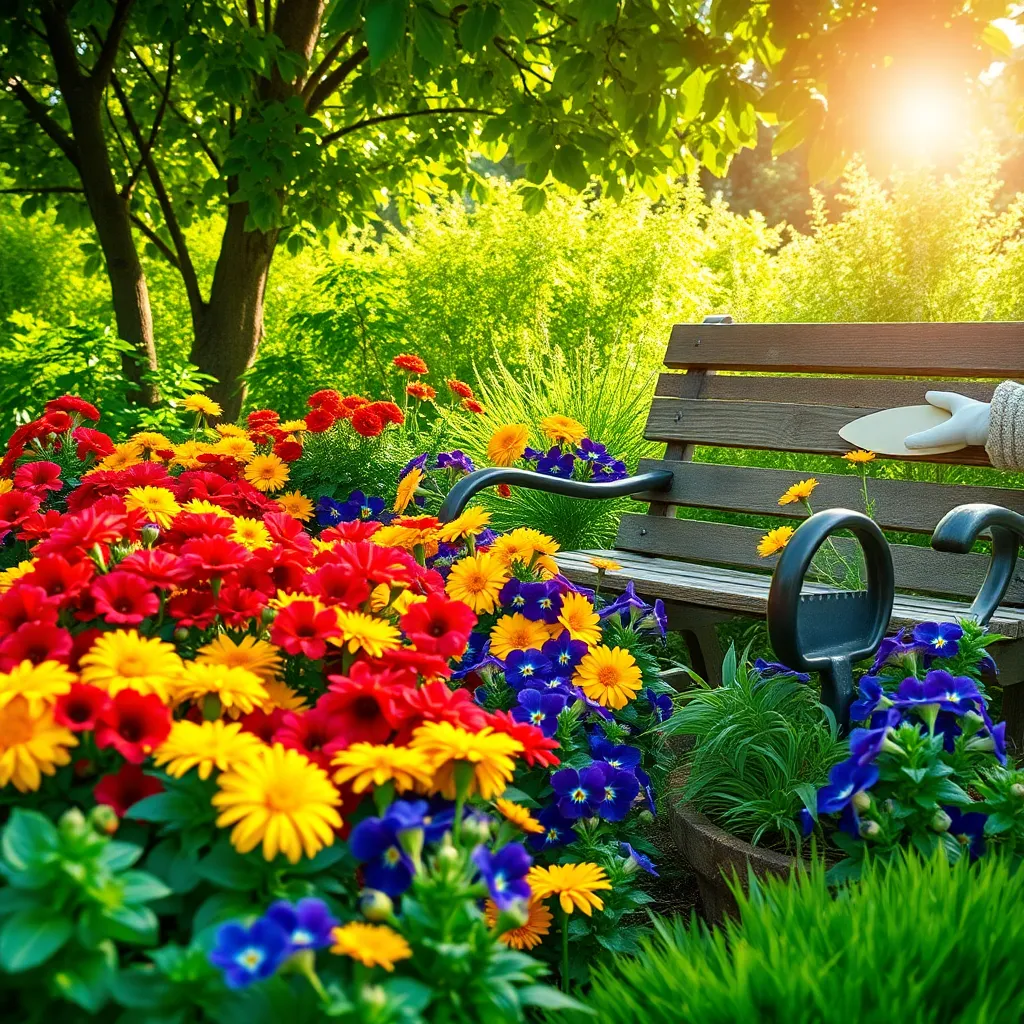
Designing a vibrant flower bed can transform your garden into a colorful oasis. Start by choosing a mix of perennials and annuals to ensure continuous blooms throughout the growing season.
Consider the sunlight exposure of your chosen location, as this will dictate the types of plants you can successfully grow. For sunny spots, opt for sun-loving varieties like coneflowers and zinnias, while shady areas might benefit from hostas and impatiens.
Prepare your soil by mixing in organic matter such as compost or well-rotted manure, which improves drainage and fertility. Testing your soil’s pH can also guide your plant selection; most flowers thrive in a slightly acidic to neutral pH.
When planting, arrange taller plants towards the back of the bed and shorter ones at the front to create depth and visual interest. Water newly planted flowers deeply and regularly, especially during dry spells, to help them establish strong root systems.
For those seeking a more advanced challenge, consider incorporating companion planting techniques to enhance growth and pest resistance. By grouping plants that benefit each other, such as marigolds with tomatoes, you can create a more resilient and productive flower bed.
Craft a Hanging Plant Display
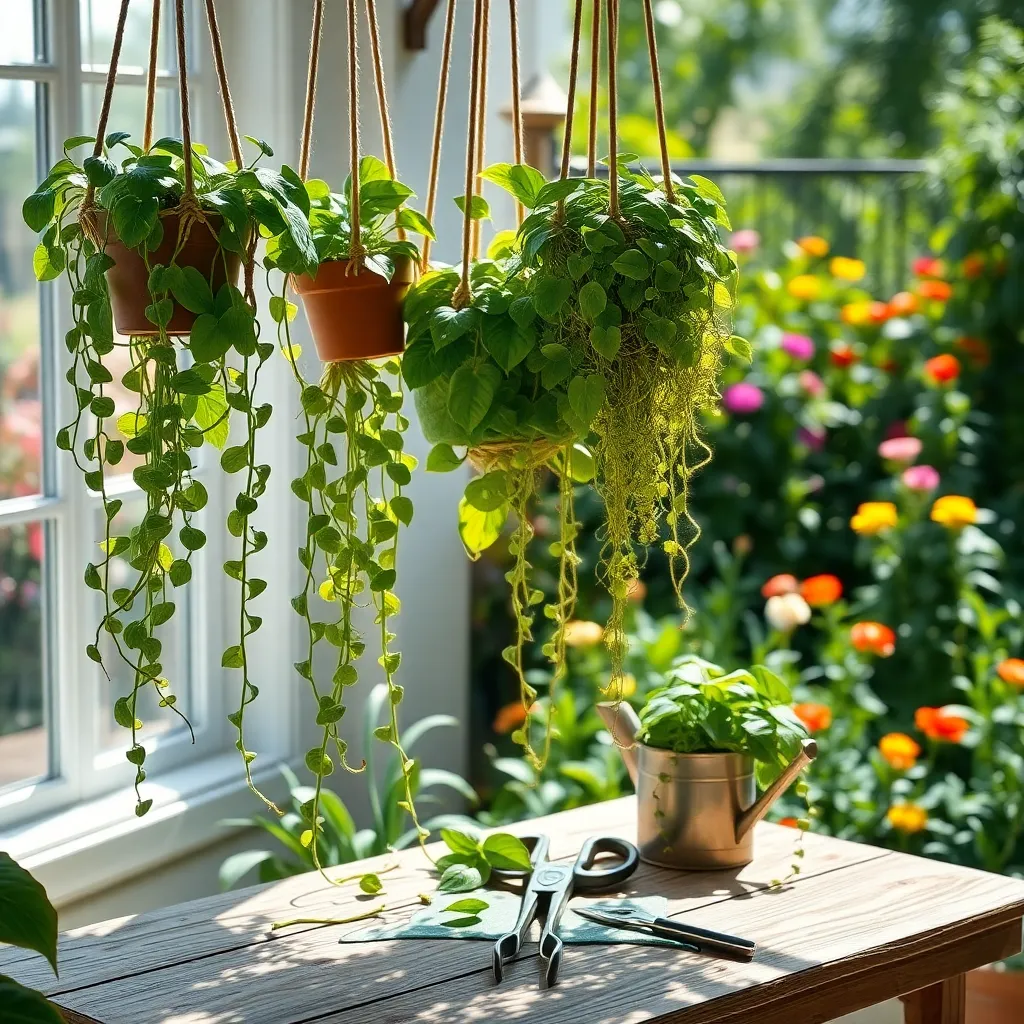
Creating a hanging plant display is an excellent way to add a vertical dimension to your gardening space. Select plants that thrive in containers, such as ferns, trailing ivies, or vibrant petunias, to ensure a lush and eye-catching display.
Begin by choosing the right container; lightweight materials like plastic or woven baskets are ideal for hanging. Ensure that your chosen container has adequate drainage holes to prevent waterlogging, which can harm plant roots.
Use a high-quality potting mix specifically designed for container plants, as it retains moisture without becoming compacted. Mix in slow-release fertilizer to provide a steady supply of nutrients, promoting healthy growth and vibrant blooms.
Position your hanging display in a spot that matches the sunlight requirements of your chosen plants. Water regularly, especially during hot weather, ensuring the soil remains moist but not soggy, as hanging plants can dry out quickly.
Start a Vegetable Container Garden
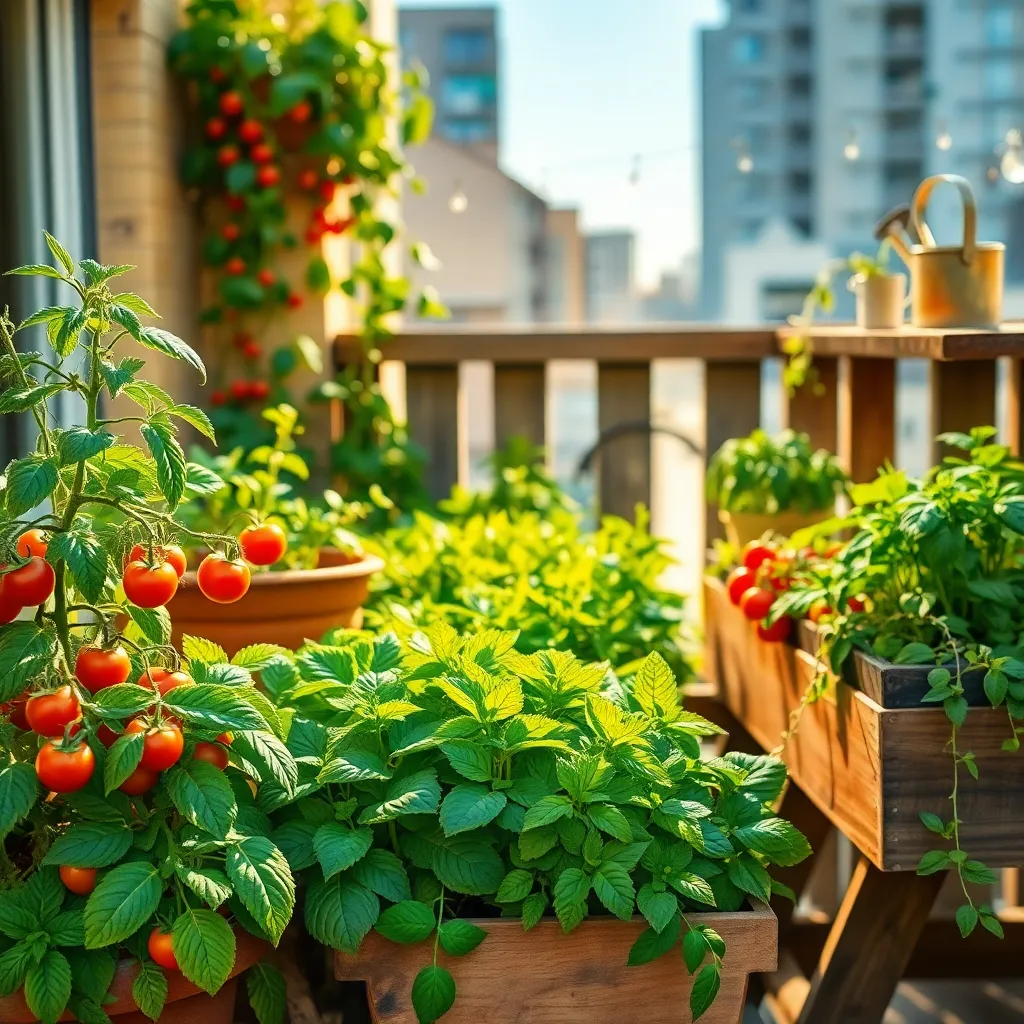
Starting a vegetable container garden is a fantastic way to grow your own food, even if you have limited space. Choose containers with good drainage holes and fill them with a high-quality potting mix, which provides the best growing medium for your vegetables.
When selecting vegetables to grow, consider those that thrive in containers, such as tomatoes, peppers, lettuce, and herbs. Ensure your containers are large enough to accommodate the mature size of the plants, typically at least 12 inches deep for most vegetables.
Place your containers in a spot that receives at least 6 to 8 hours of sunlight daily, as most vegetables require full sun to produce well. Water your plants consistently, keeping the soil moist but not waterlogged, and remember that containers may need more frequent watering than in-ground gardens.
For an added boost, feed your plants with a balanced liquid fertilizer every two to three weeks, as nutrients can leach out of containers quickly. Advanced gardeners might consider using a self-watering container to help maintain consistent moisture levels and reduce maintenance time.
Install a DIY Drip Irrigation

Creating a DIY drip irrigation system is a fantastic way to ensure your plants receive consistent moisture without the hassle of daily watering. This project is perfect for both small container gardens and larger plots, making it adaptable to any space.
To get started, gather materials such as drip tubing, emitters, connectors, and a timer. These components are available at most garden centers, and you can customize the system to fit your garden’s specific layout.
Begin by planning the layout of your drip lines, ensuring they reach the root zones of all your plants. Position emitters near the base of each plant to deliver water efficiently where it’s needed most.
After setting up the system, attach it to a garden hose and test the water flow. Adjust the emitters to provide adequate moisture, checking that each plant receives enough without over-saturating the soil.
Attract Pollinators with Flowers
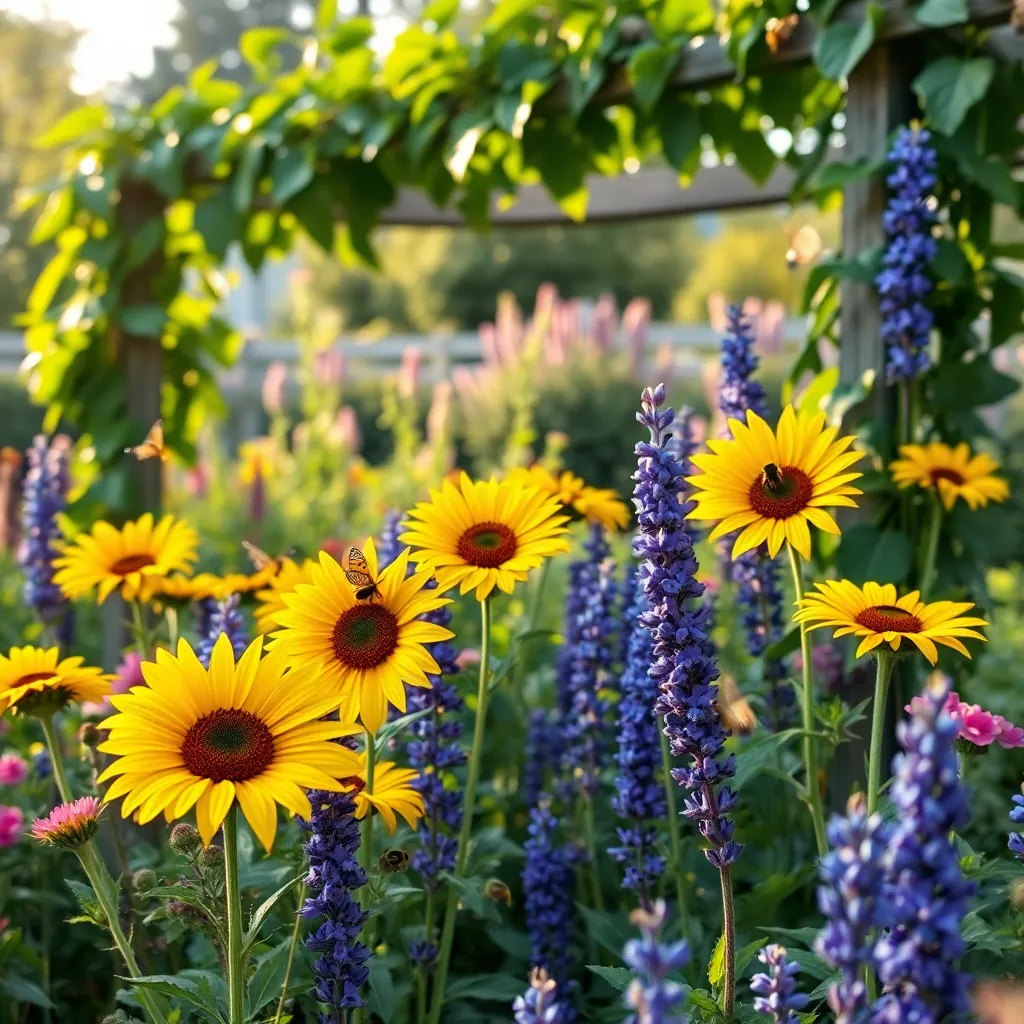
Inviting pollinators to your garden is a rewarding project that can be accomplished with the right selection of flowers. To start, choose a variety of blossoms such as lavender, coneflower, and bee balm, which are known to attract bees, butterflies, and hummingbirds.
When planting, ensure these flowers are placed in a sunny location, as most pollinators are more active in bright, warm areas. It’s also important to use well-draining soil and space the plants according to their growth requirements, typically found on seed packets or plant labels.
Water these plants regularly, especially during dry spells, to keep them healthy and vibrant. An inch of water per week is generally sufficient, but always check the soil moisture to prevent overwatering.
For gardeners looking to go a step further, consider planting native species that are particularly suited to local pollinators. Native plants often require less maintenance and are more resilient to pests and diseases, making them a sustainable choice for your pollinator garden.
Additionally, avoid using pesticides on or near these plants, as chemicals can deter or harm pollinators. Instead, practice integrated pest management techniques, such as introducing beneficial insects or using natural deterrents like neem oil.
Construct a Garden Trellis
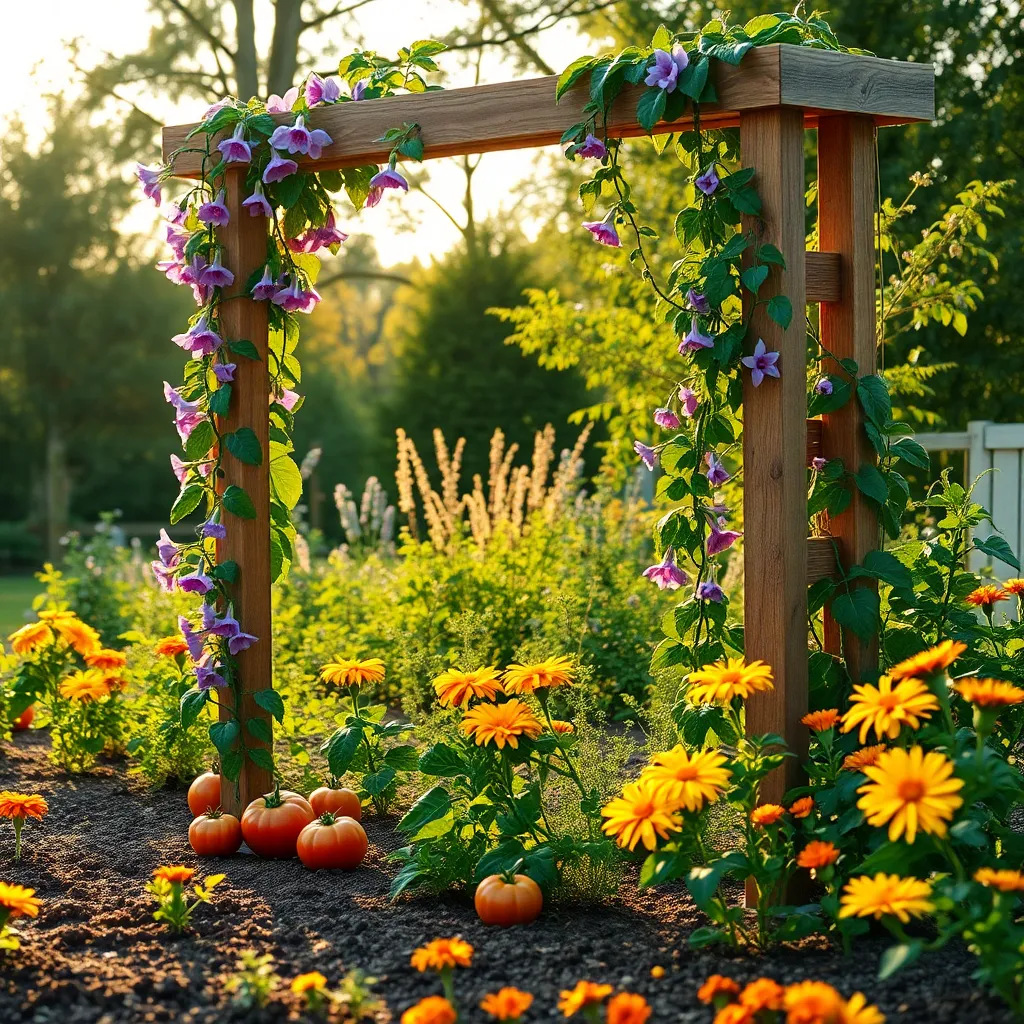
Building a garden trellis can transform your planting space, providing support for climbing plants like beans, peas, and tomatoes. Start by choosing a location that receives adequate sunlight, as most climbing plants thrive in at least six hours of direct sunlight daily.
To construct a simple trellis, you can use materials such as wood, metal, or even sturdy bamboo. Ensure that your trellis is securely anchored in the ground to withstand wind and the weight of growing plants.
For beginners, a basic A-frame trellis is an excellent choice and can be made using two long, sturdy stakes and some horizontal crossbars. Space crossbars six to twelve inches apart to give plants ample climbing opportunities while maintaining structural integrity.
Experienced gardeners might opt for more intricate designs using lattice panels or wire mesh, which can support a wider variety of plants. Remember to prune and guide plants as they grow, ensuring they follow the trellis structure and do not become tangled.
Water your climbing plants consistently, providing about one inch of water per week, depending on rainfall and climate conditions. Using mulch around the base of your plants can help retain soil moisture and reduce the need for frequent watering.
Add Mulch for Weed Control
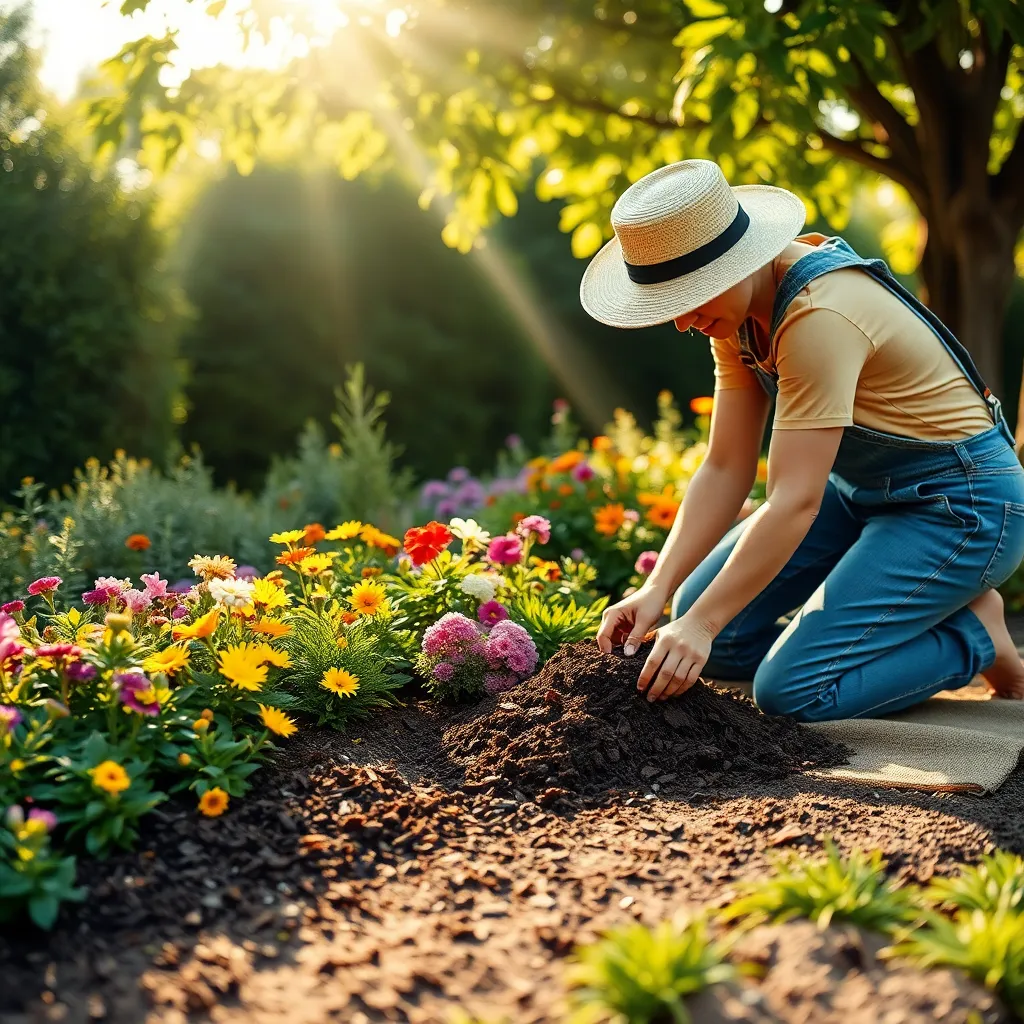
Adding mulch to your garden is a straightforward but highly effective way to control weeds. By covering the soil with a layer of organic or inorganic material, you can suppress weed growth and reduce the need for manual weeding.
Organic mulches like shredded leaves, straw, or wood chips are excellent choices as they break down over time, enriching the soil. Apply a layer of about 2 to 4 inches thick, ensuring it doesn’t touch the stems of plants to prevent rot.
For those seeking a low-maintenance option, consider using inorganic mulches such as landscape fabric or gravel. These materials offer long-term weed suppression and require less frequent replenishment compared to organic alternatives.
Mulching also helps retain soil moisture, reducing the need for frequent watering. This is particularly beneficial in hot climates, where water evaporation occurs rapidly.
Advanced gardeners might experiment with living mulches, such as low-growing ground covers, which can provide both weed suppression and aesthetic appeal. When choosing a type of mulch, consider your garden’s specific needs and your personal preferences to create an attractive and healthy growing environment.
Plant a Shade-Loving Corner
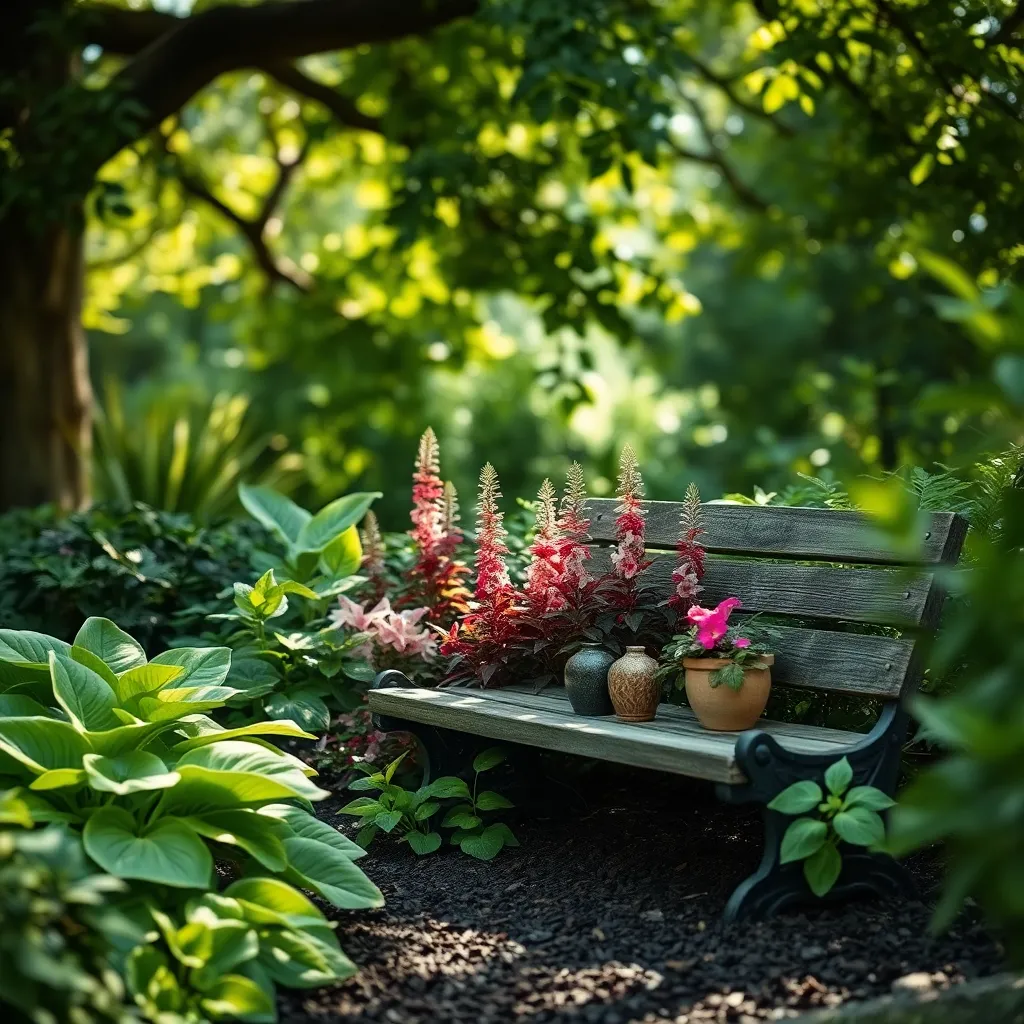
Transforming a dim corner of your garden into a lush, green haven is easier than you might think. Start by selecting shade-loving plants like hostas, ferns, and astilbes, which thrive in low-light conditions and add texture and color to shady areas.
Amend the soil with organic matter to improve drainage and nutrient availability, as shade gardens can sometimes have compacted soil. Mix in compost or well-rotted manure to enrich the soil, ensuring your plants have the best start.
Watering is crucial for shade-loving plants, as they can dry out quickly despite being in partial sunlight. Monitor the soil moisture regularly and aim to keep it consistently damp but not waterlogged, especially during dry spells.
For advanced gardeners, consider layering your plants for a more dynamic display. Plant taller species like hydrangeas at the back and groundcovers such as vinca or lamium at the front, creating a tiered effect that maximizes visual interest and space.
Conclusion: Growing Success with These Plants
As we wrap up our journey through “10 Easy Gardening Projects to Try This Weekend,” let’s reflect on the relationship-enhancing concepts we’ve explored. From nurturing plants together to creating a shared haven in your backyard, each project is designed to strengthen the bonds between you and your loved ones. We discussed the importance of communication while planning your garden, the joy of collaboration in planting, and the patience learned from watching your garden—and your relationships—grow. Each project not only beautifies your space but also cultivates trust, teamwork, and a sense of accomplishment.
Now, it’s time to take an actionable step: choose one project to start this weekend. Whether it’s planting a simple herb garden or designing a butterfly sanctuary, let this be a meaningful journey you embark on together.
Bookmark this article for future reference, as each season brings new opportunities for relationship growth and garden renewal. Remember, the seeds you plant today—both in your garden and your relationships—promise a flourishing future. Embrace these projects as stepping stones towards a thriving, harmonious partnership. Here’s to nurturing love and life, one garden at a time. 🌿❤️
